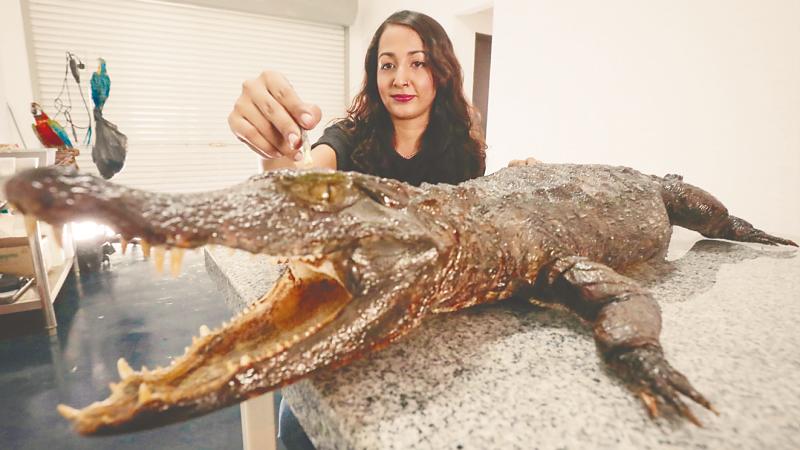WHEN muralist Anna Razak decided to take up taxidermy two years ago, her family thought it was an odd career choice.
“They thought it was weird at first,“ Anna said.
“But, they fully supported my decision and they’re always eager to see my new work.”
Anna has always been fascinated with what happens to dead animals.
“I’ve always felt that when something dies, it’s still beautiful and there’s still a lot that we can learn from the dead,” she said.
“Take a cat for example. You can only wonder what their ribs look like, or how big their heart is. These fascinate me. It piques my curiosity ... hence, taxidermy, which goes beyond the idea of just preserving an animal.”
Anna appreciates beauty in the dead. For her it is a waste having to bury or cremate carcasses as there is much to learn from their remains. Fast forward to the present, the idea of upcycling and turning them into a works of art has become her life.
She began with frozen mice that were bought by pet owners to feed their snakes and conducted experiments on them to create lifelike sculptured figurines holding guitars.
She then sought a teacher to further understand the art and science of taxidermy, veterinarian Dr Norman Affendi.
The two have worked together, even held classes at universities and lent their knowledge and expertise as consultants to the Sultan Alam Shah museum.
Over time, Anna developed the skill to conduct an autopsy on a carcass and is able determine the cause of death. She says most of the “animals” she gets, however, are in perfect condition.
Despite this, she said the process of taxidermy and the techniques involved differ with each animal.
Anna and Norman are currently working on a piece of white goat skin given by a villager. She said it may take them two months to turn it into pelt.
“When an animal is dead, it is important to freeze it as the decaying process progresses rapidly.”
The process begins with “skinning”, using a really sharp scalpel to remove the skin. She then performs “fleshing”, which is removing all the remaining flesh and fatty tissue from the skin.
The longest process that follows is placing the skin in a tanning solution, which takes six to eight weeks, to treat the skin that is later turned into pelt that will not rot. This is followed by the “breaking” process, which is simply pulling and stretching the skin to soften it.
She recalled the time a pet owner requested to have his seven-foot-long pet monitor lizard preserved. It took about a month to treat, costing about RM5,000, and was presented in a glass case.
To some taxidermy is perhaps an unusual hobby or art that is bound to make many squirm, but Anna hopes more enthusiasts will come forward and explore taxidermy with an open mind.
“It is a huge industry in Europe and the US,” she said.
“It’s far from being wicked or mercenary really. In fact, one needs to love animals. It’s a principle of mine to never kill an animal. My job is only to preserve their beauty.”
She refuses to work with unethically sourced specimens to the extent that she would report it to the Wildlife Department, if she came across them during the course of her work.










